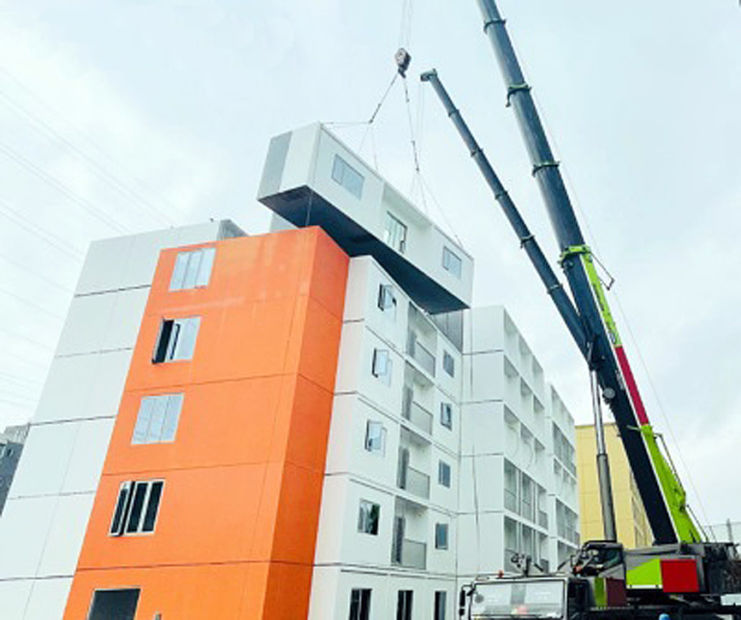Tencent Cloud leads Broad Homes down smart building path
- May 17, 2022
- Steve Rogerson

Chinese firm Tencent Cloud is helping local construction company Broad Homes develop opportunities in smart buildings.
The partnership will use Broad Homes’ whole-process digital information system and globalised, large-scale, specialised and intelligent assembly building manufacturing and service capabilities, with Tencent Cloud’s experience in interconnection, digital twin, enterprise digitalisation, AI and cloud services. The focus will be on market development, technical cooperation and product development to innovate and create development opportunities.
In the future, Broad Homes and Tencent Cloud will together help more traditional enterprises transform and upgrade. The two companies plan to carry out targeted cooperation and R&D in the fields of smart parks, smart communities and true interconnection. Efforts will go towards creating cooperation projects in the fields of intelligent construction, smart cities, industrial towns and digital upgrading of enterprises, and replicate and promote them nationwide to achieve wider and deeper strategic cooperation.
The regulation and control policies of the real estate industry in China are expected to be continuously relaxed, and affordable rental housing should drive the demand for prefabricated construction.
In 2021, China continued to increase its real estate regulation policies, and the regulation methods, intensity and detail were significantly upgraded. With the intensive introduction of a series of regulatory schemes to strengthen the prudent management of real estate finance, the real estate market suddenly cooled down.
By the end of 2021, investment in China’s real estate industry had recorded an annual growth rate of only 4.4%, lower than the 7% growth rate in 2020. In the first half of 2021, the number of new construction projects was relatively strong. However, due to the release of the pressure of regulatory measures in the second half of the year, the year-on-year decline was 11.4%.
Since this year, the government has issued several easing policies for the real estate industry. On the one hand, it has reversed residents’ expectations, on the other, it has encouraged real estate investment and guided the industry to develop steadily in a positive and healthy direction through policies.
For the prefabricated construction industry, the development goals of affordable rental housing, building energy conservation and green building have been issued recently, which provides a strong catalyst for industry development in the coming years.
At the same time, the Ministry of Housing & Urban-Rural Development announced clear targets for affordable rental housing in 40 key cities during the 14th Five-Year Plan. It plans to build 1.9 million new affordable rental housing units by the end of this year and 6.5 million new units by 2025, hoping to resolve the housing difficulties of 13 million people.
According to market analysis, the new plan of affordable rental housing should benefit the construction demand of prefabricated buildings and accelerate industry development. The benefit comes from the two advantages of prefabricated buildings: shorter construction cycle compared with traditional construction methods; and reduction in overall labour cost and environmental burdens.
For developers, the shortening of the construction cycle is very important, because expedited delivery will allow earlier generation of rental income. According to the calculation of Everbright Securities, if the rental price of affordable housing is estimated to be RMB40/m2 per month, and if the construction period for building structure and decoration is shortened by nine months, the corresponding rental value will be RMB360/m2. Under current industry circumstances with the price of prefabricated buildings equalling that of traditional buildings, prefabricated building could be a more valued method of construction.
The plan aims that by 2025 prefabricated buildings will account for 30% of newly built housing in cities and towns; the ratio was 9.1% in 2018. The policy clarified the need for green and low-carbon construction in the county and how assembled modular buildings can be adapted to modernise the construction of farmhouses and villages to create green and low-carbon villages.




